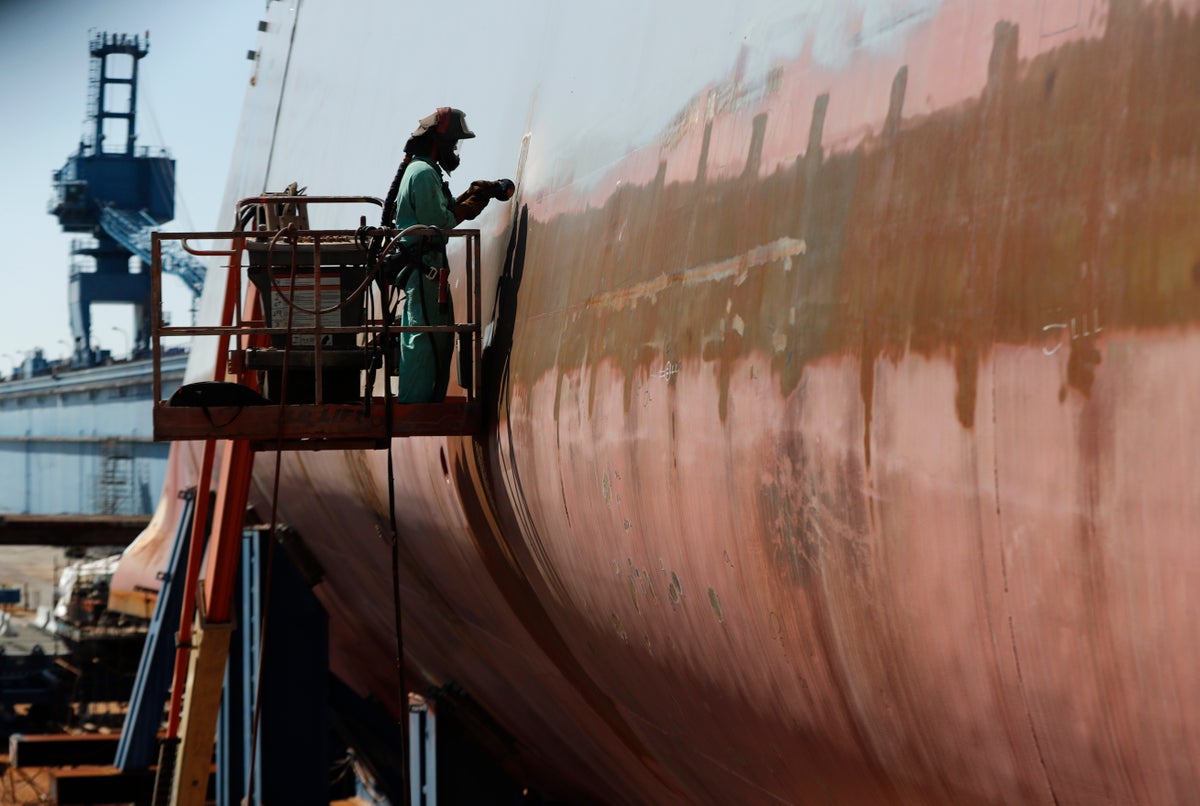
The U.S. Navy appears to have learned from its costly lessons after cramming too much new technology onto warships and speeding them into production as it embarks on building new destroyers that are the backbone of the fleet.
Military officials say they’re slowing down the design and purchase of its next-generation destroyers to ensure new technology like powerful lasers and hypersonic missiles are mature before pressing ahead on construction.
The Navy has learned “sometimes the hard way, when we move too fast we make big mistakes,” said Adm. Michael Gilday, chief of naval operations.
“Let’s be deliberate. Let’s not have our eyes become bigger than our stomach and get too far ahead of ourselves,” Gilday said last week at an event for defense industry officials in San Diego.
The Navy wants to turn the page on recent shipbuilding blunders.
Several newer combat ships designed for speed are being retired early after being beset by problems. A $13.3 billion aircraft carrier experienced added costs from new catapults that launch airplanes. Workers completed construction of a stealth destroyer before its advanced gun system, already installed, was scrapped.
For the new ship, the Navy is reducing risk by conducting more land tests and borrowing the radar and targeting system from the latest destroyers that'll soon join the fleet, said Lt. Cmdr. Javan Rasnake, spokesman for the assistant secretary of the Navy for research, development and acquisition.
It’s also working with shipbuilders and designers to refine the ship’s blueprint, cost estimates, and workforce and supply forecasts, Rasnake said.
The Navy still plans to field some new technologies on the destroyer.
Last week, it awarded Lockheed Martin a $1.2 billion contract for hypersonic missiles that travel at five times the speed of sound, and can be fired from destroyers. Last summer, it awarded the first design contract for the new ship outfitted with those missiles and lasers powerful enough to shoot down aircraft.
Matt Caris, a defense analyst with Avascent, said it’s important that the Navy gets it right by balancing the best technology that’s reliable, affordable and attainable.
“The Navy is trying to thread the needle with some potentially revolutionary capabilities in as low risk and evolutionary process as possible. This was a lesson learned by the Navy’s laundry list of shameful acquisition programs,” he said.
Some worry about history repeating itself.
There are new Navy leaders overseeing many programs and “it’s easy to imagine them making similar mistakes again with a new cast of characters,” said Loren Thompson from the Lexington Institute, a security think tank.
The Navy is in the midst of juggling its priorities as it seeks not just a new destroyer but also a new attack submarine and a replacement for the F/A-18 Super Hornet fighter jet.
The Navy is in a difficult spot because the Biden administration is not interested in dramatically increasing the military budget, said Bryan Clark, a defense analyst at the Hudson Institute. Research and development alone would cost an extra $10 billion to $20 billion for the destroyer, submarine and jet, he said, representing a big chunk of the $220 billion Navy budget.
A series of speedy, coast-hugging warships embodied shipbuilding mistakes that the Navy is trying to avoid. Critics said early versions were too lightly armored to survive combat. One version of the craft, known as a littoral combat ship, had propulsion problems. Some of the ships broke down and had to be towed. Plans for a submarine detection system were scrapped.
Combined, the costs of the first ships in that program, the stealthy Zumwalt destroyer and Ford-class aircraft carrier grew by $6.8 billion in today's dollars, according to the Congressional Budget Office.
“They’ve digested that lesson,” Clark said. “Part of what you’re seeing is a recognition that the underlying technologies are not ready yet. They don’t want to drive the program where the ship starts production before the technology is ready.”
Gilday, who is the Navy's top officer, said the transition to the new destroyers will likely start in the “2032 time frame." For now, top Navy leadership want to keep current production lines of destroyers humming until designs are ready.
That means shipyards in Maine and Mississippi will continue making existing Arleigh Burke-class destroyers. They hold the Navy’s record for longest production run for large surface warships.
At Maine’s Bath Iron Works, where the first Arleigh Burke was built in 1998, shipbuilders are happy to continue building the existing ships while new designs are tested out.
Charles Krugh, shipyard president, said shipbuilders prefer the approach of taking extra time to make sure the technology and design are right.
“If we get a fully designed ship, it’s obviously going to make us a whole lot more productive and efficient,” Krugh said.






